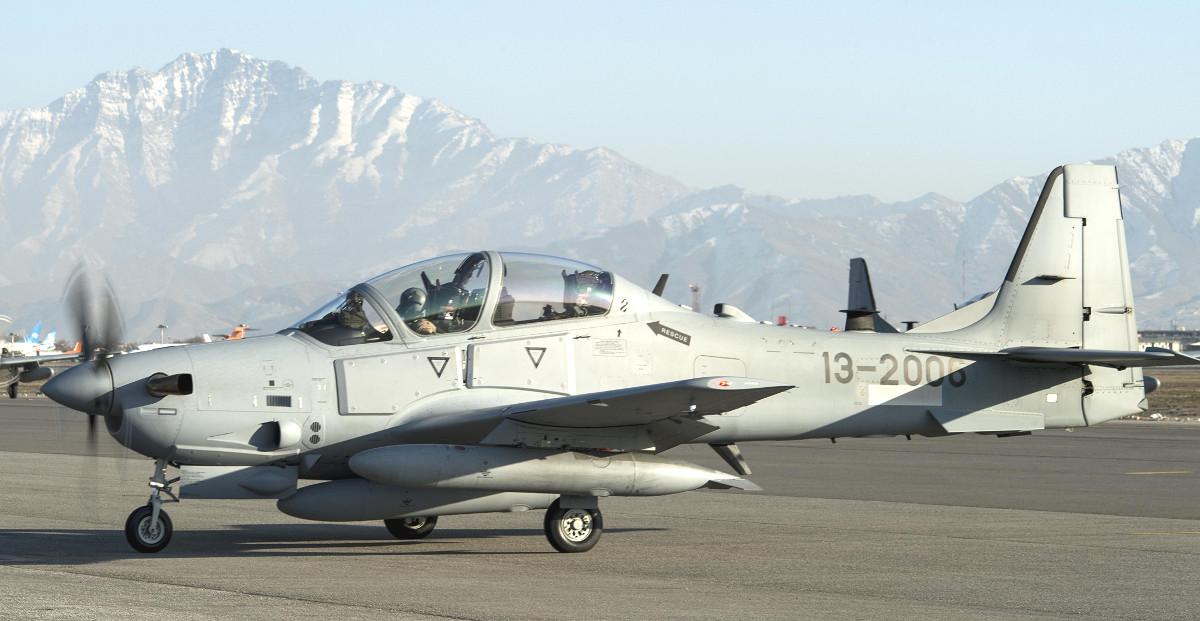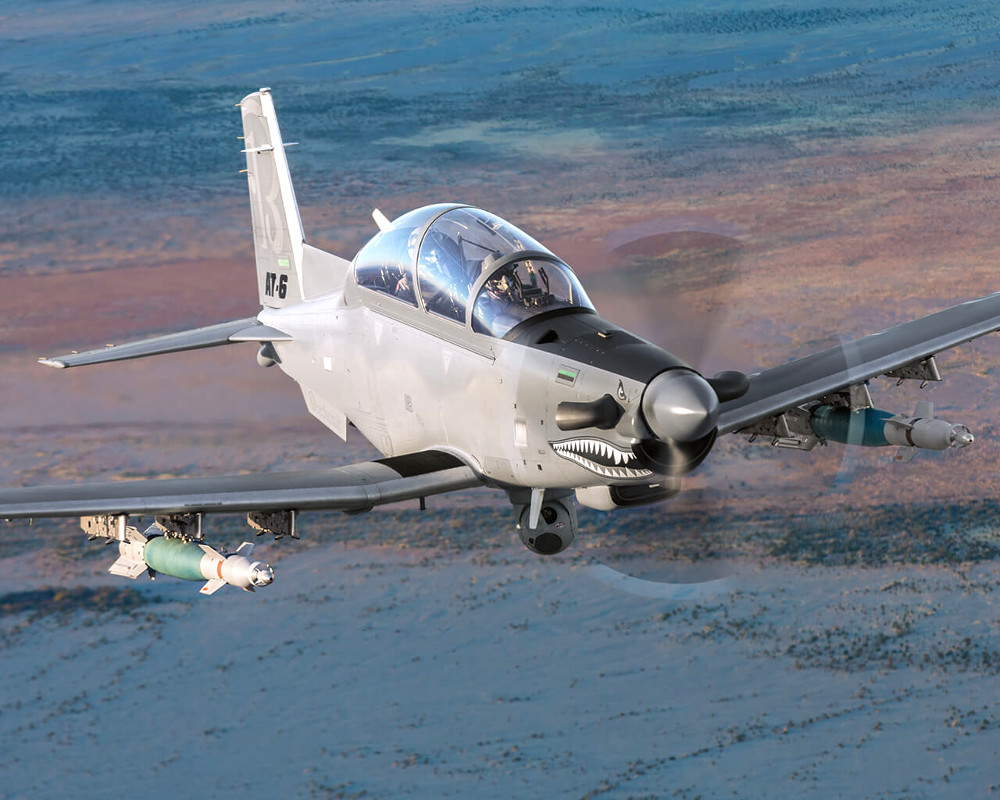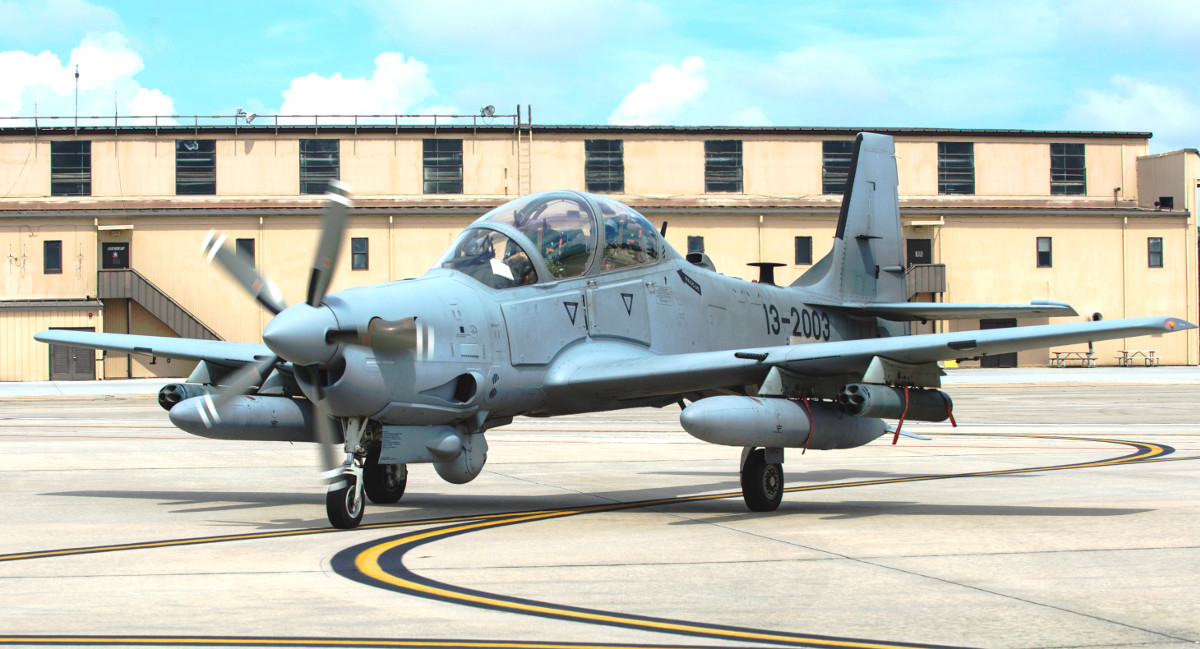The U.S. Air Force has confirmed it will not ask for any money to buy light attack aircraft in its latest proposed budget for the 2019 fiscal year. The service insists that its pushing to acquire the new planes quickly and that it will set aside billions in future spending plans, but has declined to disclose any specific details about those plans for at least another year.
Speaking at an event the Air Force Association’s Mitchell Institute hosted in Washington, D.C. on Feb. 16, 2018, Secretary of the Air Force Heather Wilson said that her service would include $2.4 billion for light attack planes into its five year strategy, but that any such spending wouldn’t begin until the 2020 fiscal cycle at the earliest. Earlier in February 2018, the Air Force announced it was cancelling a planned combat evaluation of Embraer and Sierra Nevada Corporation’s A-29 Super Tucano and Textron’s AT-6 Wolverine in favor of additional testing, focusing specifically on evaluating various sensor options for the two aircraft.
“When we finish up the experiment, we’ll have to look at how many we buy, at what rate, starting in what year, what sensor we want to add to them,” Wilson said on Feb. 16, 2018. “We put a wedge in the five-year plan because basically we intend to buy light attack aircraft and we intend to buy them very rapidly.”
“Rapid” has not been the operative word when it comes to the Air Force’s light attack plans so far. As I previously wrote here at The War Zone, this newest set of tests will be the sixth the service has run involving the A-29, AT-6, or both aircraft over the past decade.

The Air Force, along other branches of the U.S. military, have collected even more data during nearly a half dozen more similar past efforts involving other aircraft types, which you can read about in more detail here. U.S. Special Operations Command is running its own light attack aircraft project, as well.
It’s not clear how the Air Force plans to pay for this new experiment, which it says will run between May and July 2018 at Davis-Monthan Air Force Base in Arizona, but it is possible that it could use existing funds set aside for experimentation. There are no apparent plans to conduct any additional evaluations next year. The sections of service’s 2019 fiscal year budget request dealing with research, development, test and evaluation mention the phrase “light attack” once – in a note explaining that its decision to trim more than $8.4 million from its experimentation line item was because its “Light Attack Experiment” would formally come to an end in 2018.

The Air Force also continually highlights the potential involvement of foreign allies and partners in the project, repeatedly raising questions about whether it truly intends to buy light attack aircraft for its own use. In her February 2018 remarks, Wilson said that “engagement with our allies” would help inform the total fleet size. “I’m talking about it in every place I go,” Air Force Chief of Staff General David Goldfein had said at the Singapore Air Show on Feb. 6, 2018, according to Defense News, adding that he would specifically bring it up in meetings with American partners in Asia.
But again, as we at The War Zone have noted, American allies and partners are not having any apparent difficulty acquiring light attack aircraft, both with the help of the U.S. government and without, absent any tangential political considerations. The United States ally in Asia most likely to be interested in such aircraft, the Philippines, is already buying A-29s, as well as Cessna C-208 Caravans configured as intelligence, surveillance, and reconnaissance platforms that it could easily convert later into light attack planes. This makes sense given the country’s numerous ongoing insurgencies, including one involving ISIS-affiliated militants, and the increasingly poor state of its present light attack aircraft fleets.
Perplexingly, General Goldfein still mentioned the Philippines specifically as an example of a country that the Air Force could partner with in its own light attack aircraft efforts, without noting that country’s existing purchases. He also named Nigeria – which is already buying A-29s with American assistance – as another good example. It’s also worth pointing out that the Air Force’s has its own squadron of A-29s to help train pilots and ground crews from foreign air forces that operate the Super Tucano.

It’s not clear why any country would wait for the Air Force to finalize its light attack aircraft plans, which by its own admission won’t happen until at least 2020, to look into purchasing this type of aircraft. The service itself first identified a need for a light attack capability as a cost-effective alternative to higher performance multi-role jet combat aircraft in limited conflicts and to help free up those fleets for more demanding missions all the way back in 2008.
“This is the whole point of experimenting and moving quickly,” Wilson insisted in her February 2018 talk. But if this Air Force truly believes its effort to acquire a light attack aircraft fleet has been moving quickly, we’d hate to see what it considers slow.
Contact the author: joe@thedrive.com
